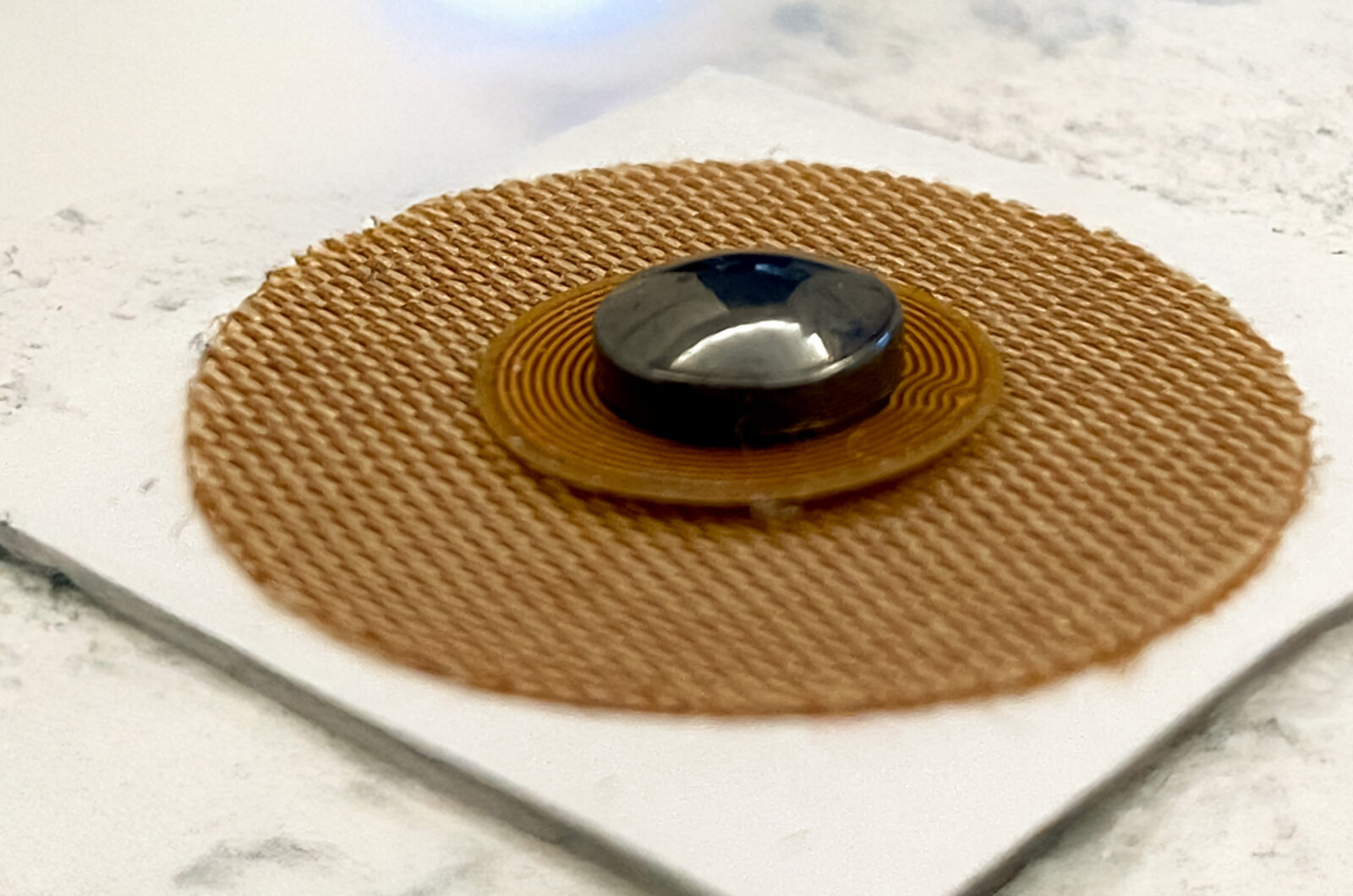People Don’t Realize When They Become Alcoholics
Alcohol consumption is a complex issue, encompassing physical, psychological, and social aspects. Regular alcohol use can lead to addiction, affecting the brain’s dopamine and GABA systems, which regulate pleasure and anxiety. The World Health Organization (WHO) reports that alcohol claims approximately 3 million lives annually, making addiction reduction relevant for both personal and public health perspectives. In Lithuania, about 15% of the population regularly consumes alcohol in risky amounts (Statista, 2023), yet only a small fraction successfully overcomes addiction without assistance.
In this article, we will explore various methods to reduce alcohol dependency—from traditional treatments like medications and psychotherapy to holistic practices, with a particular focus on biopatterns and their application through biotags—small magnetic NFC devices adhered to acupuncture points to harmonize alcohol dependency. The article is intended for a broad audience, explaining concepts simply while drawing on scientific research and practical examples.
Traditional Methods to Reduce Alcohol Dependency
Medication-Based Treatment
Medications such as naltrexone, disulfiram, or acamprosate are widely used to treat alcohol dependency. Naltrexone blocks opioid receptors, reducing the pleasure derived from alcohol, while disulfiram causes unpleasant symptoms like nausea when alcohol is consumed. Acamprosate stabilizes the brain’s chemical balance, reducing cravings for alcohol, and is effective in about 30% of patients (Alcoholism: Clinical and Experimental Research, 2018). Clinical studies show that naltrexone helps reduce alcohol consumption frequency by 36–50% in patients within the first year (JAMA, 2019). However, these medications have side effects, including headaches or liver function issues, necessitating medical supervision.
Psychotherapy and Behavioral Therapy
Cognitive Behavioral Therapy (CBT) helps identify alcohol consumption triggers, such as stress or social pressure, and teaches alternative behavioral strategies. Group therapies, such as the Alcoholics Anonymous (AA) program, also strengthen motivation and support. Additionally, family therapy or community support groups can increase abstinence likelihood by 20–25% (Family Process, 2016). Studies indicate that CBT combined with medication achieves up to a 40% success rate after one year (Addiction, 2020). However, this method requires ongoing commitment.
Detoxification and Rehabilitation
Detoxification in medical facilities helps safely remove alcohol from the body, especially in severe dependency cases. This is followed by rehabilitation programs, which include psychological support, physical activity, and dietary adjustments to maintain overall health and reduce withdrawal symptoms. Studies show that combined programs increase abstinence likelihood by 60% within the first 6 months (Journal of Substance Abuse Treatment, 2017), though success depends on individual motivation.
Holistic Methods to Reduce Alcohol Dependency
Holistic methods aim to balance the body, mind, and spirit, addressing addiction not only physically but also emotionally and energetically. These methods are growing in popularity as people seek natural alternatives to reduce dependency without strong medications.
Meditation and Mindfulness Practices
Mindfulness meditation helps manage stress and emotions that often trigger alcohol consumption. A study published in the journal *Journal of Psychoactive Drugs* (2021) found that regular meditation reduced alcohol consumption episodes by 55% among participants over 12 weeks. This method is particularly beneficial for those who drink due to emotional imbalance.
Acupuncture
Acupuncture, based on Traditional Chinese Medicine (TCM), balances Qi energy through meridian points. For reducing alcohol dependency, points like Liver 3 (Taichong), linked to liver harmonization, are often targeted. Studies (*Complementary Therapies in Medicine*, 2019) indicate that acupuncture can reduce alcohol cravings by 20–25%, though the effect may be partly placebo. Patients often experience calmness, which aids in overcoming dependency.
Aromatherapy
Aromatherapy uses essential oils, such as rosemary or cedar, to reduce stress and alcohol cravings. Rosemary stimulates the nervous system, alleviating anxiety. While scientific evidence is limited, preliminary studies (*Journal of Evidence-Based Integrative Medicine*, 2022) suggest that aromatherapy can be a useful complementary method.
Yoga and Breathing Exercises
Yoga and breathing exercises, such as pranayama, regulate the autonomic nervous system, reducing stress and emotional instability that often lead to alcohol consumption. A study (*Journal of Addiction Medicine*, 2020) showed that yoga reduced alcohol consumption frequency by 40% among participants over 10 weeks. Combining breathing exercises with visualization can enhance emotional balance and reduce cravings.
Crystal Therapy
Crystals, such as rose quartz or amethyst, are used to promote emotional harmony. It is believed that their vibrational patterns act as energetic carriers, helping balance the body’s energy. Holding amethyst near acupuncture points, such as Pericardium 6, while meditating can enhance a sense of calm, reducing the need for alcohol.
Dietary Supplements and Herbs
In holistic medicine, herbal supplements like milk thistle (silybum marianum), which protects the liver from alcohol damage, or ashwagandha, which reduces stress and anxiety, are used. Preliminary studies (*Phytotherapy Research*, 2019) indicate that milk thistle can improve liver function by 30% in patients with long-term alcohol use, helping to reduce cravings.
Biopatterns and Biotags: An Innovative Approach to Harmonizing Dependency
What Are Biopatterns and Biotags?
Biopatterns are subtle energetic templates believed to influence the energy systems of living organisms, promoting harmony and balance. In radionics, biopatterns are considered informational codes capable of altering physiological or psychological processes, such as alcohol dependency. Biotags are small devices, typically magnets and NFC (Near Field Communication) chips, into which biopatterns are encoded, along with a special material carrying these energetic codes.

Biotags are adhered to acupuncture points related to alcohol dependency harmonization to transmit information into the body’s energy field. This technology is based on quantum physics, which asserts that energy and information are closely linked. Biopatterns encoded into biotags act as “energetic instructions,” directing the body’s energy flows to reduce dependency effects. For example, a biopattern can be programmed to promote GABA balance in the brain, reducing anxiety and cravings for alcohol. The Alcohol Harmonization Biotag is offered by the Biomind company.
How Do Biotags Work?
Biotags are applied to specific acupuncture points located in meridians, as described in TCM. Popular points for reducing alcohol dependency include Liver 3 (Taichong) on the foot, linked to liver harmonization, and Pericardium 6 (Neiguan) on the wrist, associated with emotional balance. The biotag, containing an encoded biopattern, transmits information through subtle electromagnetic signals, which are believed to influence meridian energy flows. This process can be enhanced with visualization, where the individual focuses on the point, imagining energy harmonization.
For example, a biotag programmed for emotional calm is placed on the Pericardium 6 point. The client can meditate, visualizing soothing light that reduces anxiety and the urge for alcohol. Biotag technology allows non-invasive information transfer, unlike traditional acupuncture. A detailed explanation of how Biotags work is available here.
Scientific Basis
The scientific basis for biopatterns and biotags is limited, but principles of quantum physics provide a theoretical foundation. David Bohm, in his book *Wholeness and the Implicate Order* (1980), proposed an “implicate order,” where information can be transmitted non-physically. Zero-point energy (ZPE), described by John Wheeler, suggests that potential energy exists even in a vacuum and can be influenced by informational codes.
Studies on neuroplasticity (*Nature Reviews Neuroscience*, 2015) show that the brain changes in response to external stimuli, while stimulation of acupuncture points alters brain activity, particularly in areas related to addiction (*Journal of Acupuncture and Meridian Studies*, 2018). Epigenetic research, such as that in Bruce Lipton’s book *The Biology of Belief* (2005), suggests that energetic signals can alter gene expression, which could explain the impact of biotags.
Practical Application
In practice, biotags are created by radionics specialists, tailoring biopatterns to individual needs. To reduce alcohol cravings, a biotag can be programmed to promote emotional calm and GABA balance. The biotag is applied to the Liver 3 or Pericardium 6 point for 24–48 hours, with the client optionally practicing meditation or breathing exercises. Clients often report reduced anxiety, easier craving management, and improved emotional well-being.
Yoga and pranayama regulate the autonomic nervous system, reducing stress that triggers alcohol consumption. Combining yoga practices with biotags enhances the effect. For example, deep breathing while visualizing the biopattern encoded in the biotag can improve energy flow through meridians.
Crystals, such as rose quartz, are used for emotional harmony. It is believed that their vibrational patterns amplify biopattern effects. Holding a crystal near a biotag can increase the energetic impact.
Challenges and Skepticism
The effectiveness of biotags and biopatterns is debated due to limited scientific evidence. Jacques Benveniste’s water memory studies (1988) were criticized for unrepeatable results. Social platforms, such as Meta, restrict content about energetic methods to protect users from misleading claims. Nevertheless, the alternative medicine market reached $100 billion USD in 2023 (Statista, 2023), and acupuncture is recognized as a complementary method. Future research on bioelectromagnetic fields may confirm the effectiveness of biotags.
Conclusions
Reducing alcohol dependency is a complex process requiring the resolution of physical, psychological, and energetic aspects. Traditional methods, such as medications or psychotherapy, are effective, but biotags and biopatterns offer an innovative alternative, blending TCM and quantum physics principles. Adhered to acupuncture points, biotags transmit information that harmonizes energy flows, reducing dependency. Although the scientific foundation is still developing, these methods open new possibilities, combining ancient wisdom with modern technology.
Sources and Literature:
- JAMA (2019). Naltrexone for alcohol dependence.
- Addiction (2020). Cognitive behavioral therapy for alcohol dependence.
- Journal of Substance Abuse Treatment (2017). Detoxification and rehabilitation outcomes.
- Journal of Psychoactive Drugs (2021). Mindfulness meditation for alcohol reduction.
- Complementary Therapies in Medicine (2019). Acupuncture for alcohol dependence.
- Journal of Evidence-Based Integrative Medicine (2022). Aromatherapy as a complementary therapy.
- Lipton, B. (2005). *The Biology of Belief*.
- Bohm, D. (1980). *Wholeness and the Implicate Order*.
- Nature Reviews Neuroscience (2015). Neuroplasticity and behavior change.
- Journal of Acupuncture and Meridian Studies (2018). Acupuncture and brain activity.



